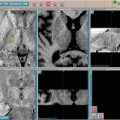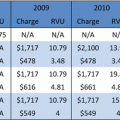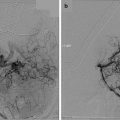© Springer Science+Business Media New York 2015
Lawrence S. Chin and William F. Regine (eds.)Principles and Practice of Stereotactic Radiosurgery10.1007/978-1-4614-8363-2_3030. Pediatric Radiosurgery
(1)
Department of Radiation Oncology, University of Colorado Cancer Center, 1665 Aurora Court, Suite 1032 MS F-706, Aurora, CO 80045, USA
Introduction
In the 1950s, Drs. Leksell and Larsson first described the use of stereotactic radiosurgery (SRS), a technique to deliver an ablative dose of radiation to an intracranial target [1, 2]. Since then, extensive experience has been obtained with SRS in adults, demonstrating safety and efficacy in benign and malignant diseases [3–5]. Over the past three decades, there has been increasing interest in the use of SRS in pediatric patients. In this chapter, we discuss the treatment of children with SRS and review existing pediatric SRS literature.
Radiosurgery
The goal of radiosurgery is to deliver high doses of radiation to a discrete target while minimizing radiation to surrounding tissue. This requires accurate patient and tumor localization, and the ability to have steep dose falloff from the target. Radiosurgery can be delivered with a Gamma Knife system and with linear accelerator (linac)-based systems.
The Gamma Knife system accomplishes this by directing multiple (approximately 200 cobalt-60 sources, with the specific number of sources depending on the type of system) beams of gamma rays to a single target. The gamma rays are directed to the targets by collimators ranging in size from 4 to 18 mm that focus the beams of radiation from the source to the target with an accuracy of 0.3 mm at the isocenter. Using a stereotactic head frame, the target is placed at the isocenter. Depending on the complexity of the target shape, there may be multiple isocenters that are treated to adequately cover the target.
Linac-based radiosurgery uses a single X-ray source which is moved around the patient. Collimation can be accomplished using cones or multi-leaf collimators. Treatment can be delivered using static fields or moving arcs. Patient head positioning uses either an invasive frame similar to the frame used for Gamma Knife radiosurgery, or non-invasive frames. Additional positioning accuracy is obtained with robotic couches that allow for correction of both translational and rotational errors.
Unique Aspects of Radiosurgery in Children
There are some unique practical aspects of delivering radiosurgery in children. In children less than 24 months old, the lack of skull thickness complicates the fixation of a stereotactic localization frame to the skull. Skull thickness is not an issue when using a non-invasive frame. An inappropriately applied head frame pin may penetrate the skull of a young child. To avoid this complication, some institutions utilize a special torque wrench that allows accurate measurement of torque force applied to a child’s skull during head frame placement, which should be no more than 2–4 inch-pounds of torque for younger children and slightly more for a child over 3. Another potential complication of a child’s thin skull is that it is deformable. This may result in a loss of positioning accuracy. In younger children (2–10 years of age), precision is maintained by using special posts of the head frame that are tailored to the curve of a small child’s head. Often, longer pins are used because of their small head circumference, making placement of the frame more critical than in adolescents and adults. Because of the need to use long pins, special care must be used when moving the child during the procedure.
Most adult patients receive Gamma Knife radiosurgery under local anesthesia with light sedation. However, many children younger than 12 years old cannot tolerate the procedure awake and therefore undergo radiosurgery using general anesthesia. This requires special expertise with anesthesiologists who are comfortable with imaging and treating patients under general anesthesia [6]. For Gamma Knife SRS, the anesthetized child is moved multiple times during planning and treatment with the head frame in place.
The anesthetic concerns are decreased for linac-based radiosurgery. Treatment planning scans are typically performed on a different day, eliminating the need to move children under general anesthesia. However, it is still critical to closely coordinate with the anesthesia team to maintain a safe environment for treatment of the child.
Finally, there is a significant difference in normal tissue tolerance between children and adults. There is mixed data showing cognitive deficits in adults who receive radiation to the brain [7]. However, there are multiple studies showing significant neurocognitive deficits in children, with increasing risk and severity for younger children and high doses [7, 8].
Published Experiences of Pediatric SRS
SRS has been used in children with arteriovenous malformations, malignant brain tumors, and benign brain tumors. Some reports are specific to pediatric patients, but many also include adult patients. Whenever possible, the pediatric specific data is presented. Current literature is reviewed here and grouped by diagnosis.
Arteriovenous Malformations
Arteriovenous Malformations (AVM) are congenital vascular abnormalities that are at risk of hemorrhage. Primary management is typically surgery, with embolization as an option. SRS is a well-accepted treatment option when surgical risk is unacceptable. The earliest descriptions of SRS for children with AVMs come from Italy [9], the University of Pittsburgh [10], and Children’s Hospital, Boston and Brigham and Women’s Hospital [11]. Since that time, there have been numerous publications reporting the experience of using SRS for children with AVMs, demonstrating both efficacy and safety. The largest series are reviewed here.
The largest pediatric SRS experience for AVMs comes from the UK [12]. Three hundred and sixty three children underwent 410 treatments, including 4 with planned two-stage treatments and 43 who were retreated. The most common presentation was hemorrhage seen in 80 % of the children. Mean SRS dose was 22.7 Gy (range 15–25 Gy). Follow-up duration for the group was not specified. Obliteration rates were calculated from 220 children with sufficient follow-up, while toxicity was reported for the entire cohort. For children treated upfront, the obliteration rate was 71 % and the mean obliteration time was 32.4 months. For children retreated, the obliteration rate was 62.5 % and the mean obliteration time was 79.6 months. Radiation necrosis was seen in 1.1 % of patients. Another large series from the University of Virginia reported on 186 children [13]. Similar to the UK experience, hemorrhage was the most common presenting sign, seen in 71.5 % of children. Mean initial SRS dose was 21.9 Gy. In 41 children who underwent repeat SRS for incomplete obliteration, the mean SRS dose at retreatment was 20.7 Gy. With a mean follow-up of 98 months, complete obliteration was seen in 49.5 % after initial SRS and 58.6 % after repeat SRS. Small nidus volume and higher SRS dose were associated with higher rates of obliteration. MRI changes were seen in 37.8 %, but were accompanied by symptoms in only 7.2 %. Another series from the University of Pittsburgh reports on 135 children. The median SRS dose was 20 Gy. With a median follow-up of 71.3 months, the obliteration rate at 5 years was 67 %. On multivariate analysis, only higher SRS dose was associated with improved obliteration rates. Adverse radiation effects were seen in 5.9 %. There are two other series with 100 or more children, one from Taiwan [14] and the other from France [15], that report similar results.
The extensive use of SRS in children with AVMs has allowed some comparisons between pediatric and adult patients. Hemorrhage as a presenting symptoms is more common in children [16]. While the overall obliteration rate is comparable between children and adults, it appears that children respond earlier to SRS [16, 17]. There may also be a differential response based on the size of the AVM. The group from Taiwan found that AVMs smaller than 3 cm and larger than 20 cm have similar obliteration rates between children and adults, with much better response in smaller AVMs [14]. However, children with AVMs of intermediate size between 3 and 10 cm had lower obliteration rates than adults with similarly sized AVMs.
Ependymoma
While ependymomas make up a relatively small proportion of pediatric brain tumors, they may be well suited to treatment with SRS. The standard management of these tumors is maximally safe resection followed by postoperative fractionated radiation therapy. Chemotherapy may be of limited effectiveness and is currently being studied in a randomized trial by the Children’s Oncology Group. Local failures occur in approximately 2/3 of recurrences and typically occur within the treatment field [18]. SRS has been used in both residual tumor and recurrent disease.
In the upfront setting, at St. Jude Children’s Research Hospital five children received an SRS boost (median dose 10 Gy) after conventionally fractionated radiation (50.4–52.2 Gy) for residual disease [19]. At a median follow-up of 24 months, one child had a local recurrence and died of progressive disease. No significant toxicities were seen. In another series from Boston, three children with ependymomas received SRS (dose 10–15 Gy) as part of initial management after conventionally fractionated radiation [20]. Two of those children are alive with no evidence of disease 30 and 62 months from SRS.
There are larger series with ependymoma treated at recurrence. Twenty six patients (12 were under 18 years at diagnosis) with 49 lesions were treated at the Mayo Clinic [21]. The median SRS dose was 18 Gy. With a median follow-up of 3.1 years, local control at 3 years was 72 % and median overall survival was 5.5 years. Two patients developed radiation necrosis. At the University of Pittsburgh, 39 patients (median age 22.8 years, ranging from 2.9 to 71.1 years) received SRS to 56 lesions [22]. Median SRS dose was 15 Gy. With a median follow-up of 23.5 months, PFS at 3 years was 45.8 % and OS at 3 years was 36.1 %. Three patients developed radiation necrosis.
While these two series show good local control with minimal toxicity, there are other reports with less promising results. The Boston series reports on 90 children treated with SRS (median dose 12.5 Gy) included 25 children with ependymoma treated at recurrence and the three children treated upfront mentioned earlier [20]. For children with ependymomas treated with SRS, median PFS was 8.5 months and local control at 3 years was 29 %. Radiation necrosis and neurologic symptoms requiring surgery occurred in 19 of the 90 patients. A smaller series of six children with recurrent ependymoma receiving SRS (median dose 18 Gy) at St. Jude Children’s Research Hospital had a median PFS of 15 months and median OS of 65 months. Four patients died of disease. One patient was alive 10 years after SRS, but with symptomatic radiation necrosis requiring surgery and hyperbaric oxygen. The last patient died from radiation necrosis.
There are other series that include small numbers of pediatric patients. The Indiana University experience reported on eight patients (five were children) with 13 tumors, treated upfront and at recurrence. Median SRS dose was 14 Gy and median follow-up was 30 months. Three year in field control was 61 % and OS was 75 %. Two patients, both of whom received prior radiation therapy, developed symptomatic radiation necrosis. The Washington University experience of SRS (dose ranged from 14 to 20 Gy) for nine patients with ependymoma included an 11 and an 18 years old [23]. The older child treated definitively is alive with no evidence of disease 56 months after SRS. The younger child had a local failure and died 27 months after SRS. A series from Texas included three children with ependymoma [24]. All three recurred within 16 months, and two died from progressive disease. Two children were treated in Japan to 16 lesions with local control for 21 months and no reported toxicity [25].
Embryonal Tumors
Embryonal tumors include medulloblastoma, primitive neuroectodermal tumors (PNET), medulloepithelioma, pineoblastoma, ependymoblastoma, and atypical teratoid/rhabdoid tumor (ATRT). Standard treatment for these embryonal tumors includes surgical resection, chemotherapy, and radiation therapy. Radiation treatment for these tumors typically includes craniospinal irradiation due to a risk of dissemination throughout the CNS, along with a boost to initial sites of disease. SRS has also been used in both initial therapy and recurrent disease.
The Boston SRS series includes 21 children with medulloblastoma and PNET, with six children being treated upfront with SRS (median dose 12.5 Gy) [20]. Median PFS was 11 months and 3 year local control was 57 %. A report from the University of Heidelberg on 20 patients with 29 lesions included 6 patients under 14 years [26]. All patients had recurrent disease after receiving prior chemotherapy and radiation therapy. Eight lesions were treated with SRS with a median dose of 15 Gy. There were no local failures or symptomatic radiation necrosis. However, the follow-up for the SRS lesions was not specified. A series from Austria included 12 children with embryonal tumors [27]. Mean dose was 18.8 Gy. With a mean follow-up of 32 months, local control was 50 %. At the University of Pittsburgh, seven children with recurrent disease received SRS (median dose was 14.5 Gy) to 15 lesions [28]. With a median follow-up of 25.8 months, local failure was seen in 5 children. No radiation necrosis was seen. All children died from progressive disease, with a median survival of 15 months from SRS. A series from Texas included seven children with embryonal tumors (medulloblastoma, PNET, and ATRT) who received SRS (median dose of 17 Gy) to 15 lesions [24]. With a median follow-up of 11.5 months, there was one in field failure and two cases of radiation necrosis.
There are other small series of SRS in pediatric embryonal tumors. A report from Denmark included three children with embryonal tumors who received SRS (15–18 Gy) [29]. Two children are alive with distant disease at 76 and 70 months from SRS and one died from metastatic disease at 13 months from SRS. At the University of Arizona, two children with medulloblastoma received SRS (4.5 and 6 Gy) for a boost after fractionated radiation therapy. At 51 months and 16 months of follow-up, both children have no evidence of disease and no radiation necrosis was seen.
High-Grade Gliomas
High-grade gliomas are WHO grade III and IV tumors. These are typically very aggressive with poor clinical outcomes. Standard therapy includes resection and adjuvant radiation and chemotherapy. In these children, SRS has been used as initial therapy and at recurrence.
The pediatric SRS experience from Boston reports 18 children with high-grade gliomas (median SRS dose 12.5 Gy for the entire series) [20]. With a median follow-up of 24 months, PFS at 3 years was 12 months and local control at 3 years was 50 %. An early series from the University of Pittsburgh of 25 children who received SRS included five children with high grade gliomas [30]. Mean SRS dose for the entire group was 15.2 Gy. Two have no evidence of disease, one had local progression only, one had disseminated disease, and one died of disease.
Two children with anaplastic astrocytomas treated to three lesions were included in the series from Texas [24]. SRS dose ranged from 17 to 19 Gy. With a follow-up of 16–18 months, there was no progression and one child had asymptomatic radiation necrosis.
Low-Grade Gliomas
Low-grade astrocytomas are WHO grade I or II and include pilocytic astrocytomas and fibrillary astrocytomas. These tumors are typically slow growing. With a complete resection, adjuvant therapy is usually not required. For incompletely resected tumors, adjuvant chemotherapy and radiation therapy are treatment options. SRS has been used as initial therapy and at recurrence.
The largest series of children with low-grade gliomas comes from the University of Pittsburgh [31]. Fifty children with juvenile pilocytic astrocytomas received SRS (median dose 14.5 Gy) at initial diagnosis for residual tumor (n = 16) or recurrence (n = 34). With a median follow-up of 55.5 months, PFS at 3 years was 82.8 %. Longer PFS was seen with solid tumors, smaller target volumes (<8 cc), treatment upfront (versus at recurrence), and no brainstem involvement. Two children developed asymptomatic radiation necrosis and three had symptomatic radiation necrosis. At the Karolinska Hospital in Sweden, their series included 16 children (of 19 patients total in the report) with pilocytic astrocytomas who received SRS (median dose 10 Gy). With a median follow-up of the children of 5 years, there were no local failures. Three children had asymptomatic radiation necrosis and two had symptomatic radiation necrosis, with one requiring surgery. A series reporting SRS in children from Austria included 12 children with low-grade gliomas [27]. Mean SRS dose was 15.2 Gy. With a mean follow-up of 38 months, tumor progression was seen in two children and one child developed edema requiring steroids.
A small series from Washington University includes six children with pilocytic astrocytomas that received SRS (median dose 15.5 Gy) [32]. Median follow-up for the SRS patients was not specified. PFS at 5 years was 80 %. Another series from Texas included three children with pilocytic astrocytomas who received SRS (dose of 10–25 Gy) [24]. No local failures were seen with a follow-up ranging from 1 to 27 months.
Stay updated, free articles. Join our Telegram channel

Full access? Get Clinical Tree







